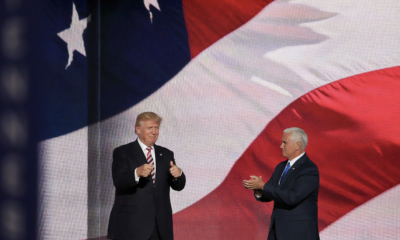Economic
Advocate General Says Brexit Can Be Revoked

On the 4th December 2018, the Advocate General released his opinion on whether Article 50 TEU allows for the unilateral revocation of the notification of the intention to withdraw from the EU. There is absolutely zero mention nor reference to the term “revocation” under Article 50 and this is largely because Article 50 was never actually intended to be used. According to David Allen Green, “Article 50 was intended to be an ornament not an instrument.” Prior to the Brexit referendum, it was unthinkable that any country would ever intend to leave the European Union. However, in a referendum on 23rdJune 2016, the citizens of the UK voted in favour (51.9% to 48.1%) of their country’s exit from the European Union. Consequently, the UK gave formal notification of the intention to withdraw from the EU on Wednesday 29thMarch 2017 and thus in absence of a withdrawal agreement, the Treaties will cease to apply after two years, which all leads to the following question – can this notification of withdrawal be revoked?
The UK Government contends that this question is purely hypothetical, since there is no indication that Parliament is going to revoke its intention. However, the Advocate General emphasises that the dispute is genuine and “has obvious practical importance.” Without the possibility of revocation, the UK faces two unpleasant options: (a) to leave the EU with a deal, or (b) to leave the EU without a deal. If the notice of the intention to withdraw were revocable, this would open a third more-admirable option, namely remaining in the European Union in the face of an unsatisfactory Blindfold Brexit.
In addressing the issue, the Advocate General concludes that the European Court of Justice should, in its future judgment, declare that Article 50 TEU does allow for the unilateral revocation of the notification of the intention to withdraw from the EU, until such time as the withdrawal agreement is formally concluded. In his published opinion, the Advocate General deduces from his systematic analysis for Article 50 TEU various reasons in favour of a unilaterally revocable notification.
(1) Not a prerequisite for the withdrawal
First, the substantive and procedural obligations imposed by Article 50 TEU on a Member State which decides to withdraw are very limited. Whilst, the Member State must notify its intention to the European Council, it is by no means required to justify that intention, or to set out the reasons which lead it to leave to the EU. Similarly, it must wait two years from the notification to leave as the conclusion of an agreement is not a prerequisite for the withdrawal to be completed. Therefore, as occurs in other areas of law, in the absence of an express prohibition or a rule which provides otherwise, whoever has unilaterally issued a declaration of intent addressed to another party, may retract that declaration until the moment at which, by the addressee’s acceptance, conveyed in the form of an act or the conclusion of a contract, it produces effects.
(2) Intention to withdraw rather than decision to withdraw
Secondly, Article 50(2) TEU states that “a Member State which decides to withdraw shall notify the European Council of its intention,” thereby activating the second phase of the procedure. Emphasis must be placed on the word “intention”; the provision refers to the notification of the ‘intention’ to withdraw rather than the decision to withdraw. Intentions are never conclusive and could change at any point in time. The UK Government could simply argue that their intention has since changed, and they now wish to remain. This argument, prima facie, seems appealing but is perhaps distorted by subsequent wording in Article 50(2). The article also uses the term ‘decision’: “The Member State which decides to withdraw shall notify…its intention.” However, Article 50(2) TEU could have used the formula ‘shall notify that decision’ (or another similar formula), instead of ‘shall notify its intention’. Some meaning must be attributable to that wording, which is undoubtedly not due to an oversight. It may, therefore, be considered that the use of the word ‘intention’ and of the present tense (‘which decides’ rather than ‘has decided’) in Article 50(2) TEU authorises the State to ‘retract’ during the process and not give effect to its initial intention to withdraw, as long as that is in accordance with its own constitutional requirements.
(3) Not conclusive due to the second phase of acting in accordance with the Member State’s constitutional requirements
It is common knowledge that the negotiation may only be triggered after notification of the intention to withdraw, for which it is essential that the Member State has acted in accordance with its own constitutional requirements. As such, the unilateral nature of the first phase of the procedure under Article 50 TEU is projected onto the subsequent phase of negotiating the terms of its withdrawal with the EU institutions, in such a way that if the withdrawal decision is revoked in accordance with the departing Member State’s constitutional procedures, its constitutional foundation will merely disappear.
(4) Illogical
The Advocate General states that the rejection of revocation would in practice entail the forced exit from the EU of a State which, according to the Court of Justice’s recent case-law, continues to be an EU Member State in all respects. It would therefore be largely illogical to force that Member State to withdraw from the EU in order to then have to negotiate its accession. If Article 50 did require a forced departure only for the Member State to re-join at a later stage, the Member State would be bound by Article 49 TEU – which requires joining Member States to join the Schengen and adopt the Euro as their domestic currency.
Subject to Conditions
The Advocate General has, however, stated that the possibility of unilateral revocation is subject to certain conditions and limits.
- The unilateral revocation must be notified by a formal act to the European Council
- It must respect national constitutional requirements (this most probably requires an Act of Parliament)
- The revocation must be made in good-faith (in absence of the good-faith requirement, a mockery would be made of the two-year time period post notification)
An optimistic future?
Whilst the opinion released by the Advocate General does seem rather appealing to the pro-European, it remains unlikely that the UK Government would ever revoke its notification. The UK Government has already contended that the question of revocation is inadmissible, given that it is hypothetical and merely theoretical, since there is no indication that the UK Government or Parliament are going to revoke the notification of the intention to withdraw. A revocation would lead to an inevitable uproar by the likes of Nigel Farage and Boris Johnson who would certainly challenge the prospect of a second referendum. However, it was only yesterday that a petition of 1.5 million signatures were handed into Downing Street demanding a new referendum. Perhaps, Theresa May could use this petition to justify a revocation and to provide a second referendum to the people.
Economic
Tackling Non-Tariff Barriers: African Continental Free Trade Area (AfCFTA) Trading in East Africa Region

“Tearing down these trade walls is key to regional integration in the continent.” – Ms. Pamela Coke-Hamilton.
Traders within the East Africa region should be elated with the African Continental Free Trade Area (AfCFTA), which came into force in January 2021. Prior to the commencement of the AfCFTA, many traders haddifficulties engaging in cross-border trade within the region due to non-tariff barriers. For example, dealing with roadblocks and hectic custom procedures, restrictive licensing processes, certification challenges, uncoordinated transport related regulations and corruption. Understandably, non-tariff barriers (NTBs) are construed to mean restrictions that are put in place that make importation and exportation of products really costly. It is worth noting that NTBs often arise from laws, regulations, policies, private sector business practices and they are used to protect domestic industries from competition.
In order for East African traders to fully enjoy the benefits of AfCFTA, it is imperative that NTBs are eliminated. All hope is not lost as there is a groundbreaking online mechanism of eliminating NTBs. Notably, African Union in collaboration with UNCTAD came up with a simple and user-friendly website which allows traders to report NTBs they encounter when trading within Africa. As a result, governments are required to respond and eliminate the said barriers. It is against this backdrop that this paper seeks to analyse how to tackle non-tariff barriers in the wake of AfCFTA trading. Further, it seeks to provide recommendations to the massive challenge that NTBs pose on intra-African trade and integration.
AfCFTA Protocol on Trade in Goods
Annex 5 of the AfCFTA Protocol on Trade in Goods provides for mechanisms of identifying NTBs, institutional structures for their progressive elimination within the AfCFTA and reporting and monitoring tools for NTBs. This begs the question: What obligations do AfCFTA state parties have with respect to ensuring elimination of NTBs?
Annex 5 to the Protocol establishes a reporting, monitoring and elimination mechanism where privatesectors can file complaints on specific trade obstacles. The complaint is then forwarded to the responsible state party to give its feedback on the complaint and resolve it expeditiously. Additionally, through the reported NTBs, improvements are made to the national and regional trade policies.
Government Obligations
State parties are required to appoint national NTB focal points to help resolve NTBs. The NTB focal points are thereafter trained in using the online tool, how to receive NTB complaints in real time and how to resolve the barriers within the set deadlines. Notably, the focal points will receive email alerts whenever a trader lodges a new complaint or a government comments on an ongoing case.
Goodwill from governments is an essential ingredient for successful elimination of NTBs since the AfCFTA mechanism is built on stronger foundations. In addition to the national focal points and public-private National Monitoring Committees, an NTB Coordination Unit will be created in the newly established AfCFTA Secretariat in Accra, Ghana. The NTB Coordination unit will monitor barriers and progress towards their resolution. Furthermore, state parties will be required to ensure that an NTB sub-committee meets regularly to assess progress and challenges.
Creating Awareness in the Private Sector
State parties need to create awareness about the online platform to the private sector. This is owing to the fact that the NTB mechanism is available to all and sundry: micro, small and medium-sized companies, informal traders, and youth and women business operators. Through the AfCFTA NTB mechanism, all stakeholders have equal voices since the platform is transparent. Additionally, internet connectivity should be available at smaller border crossings so that informal traders do not face any obstacles while trying to make NTB complaints through the platform. Worth mentioning is that in places where there is no internet access, an offline short-messaging-service (SMS) feature will also be rolled out in the medium term.
Procedure for Elimination of Non-Tariff Barriers
State parties must exhaust the existing online notification NTBs channels before escalating a complaint or trade concern to the AfCFTA level. However, there are additional procedures in resolving disputes. For instance, where a state party fails to resolve an NTB after a factual report has been issued and a mutually agreed solution has been reached, then the AfCFTA Secretariat and an appointed Facilitator will recommend dispute settlement.
Appendix 2 of the NTB Annex outlines mandatory processes and deadlines. For instance, an NTB complaint must receive
an initial response within a period of 20 days. Moreover, if no resolution has been found after 60 days, then the parties should request for an independent facilitator to be appointed. If coming to a resolution isproving difficult, then parties can take the matter for dispute settlement.
Despite these deadlines and procedures being crucial, small traders could be in need of a quick solution to the NTB on the ground. Looking at the Tripartite region online mechanism and the speed at which NTBs have been resolved, traders should have faith that they will receive swift assistance.
Language (non-tariff) barriers
Different traders speak different languages and for instance a Swahili- speaking truck driver from Tanzania may want to lodge a complaint about the number of import documents required when delivering cotton fabric to Rwanda. That complaint would then need to be sent to French-speaking Rwandese officials, raising a possible language barrier.
The NTB online tool mitigates potential language difficulties with a plugin that automatically translates complaints from English, French, Arabic, Portuguese, Swahili and 12 other African languages into the official language of the receiving country.
Conclusion
As East African traders envisage the end of the COVID-19 pandemic or at least its receding soon, their hope is that AfCFTA will be an encouraging stimulus for Africa’s development. The groundbreaking online AfCFTA NTB mechanism is a good starting point. Suffice it to say, it will need considerable improvement before a rules-based, expeditious and binding arrangement will be in place. The absence of private complaints to a judicial forum remains a deficit. This is owing to the fact that complaints are dealt with on an ad hoc basis. This will not bring about permanent and systemic solutions. Instead, it will provide legal certainty, further predictability and establish binding precedents. The AfCFTA NTB mechanism is ahead of the curve globally. It is an innovation the world will want to watch closely to see what it can learn from Africa and the AfCFTA.
Economic
A Femtech Boom – Putting Women First

A market anomaly
Historically, investment in health issues that exclusively or disproportionately impact women has been scarce. Only 4% of global healthcare R&D funding has been allocated to women’s health, even though it represents an economic burden of $500 Billion – and women are 51% of the world’s population.
At the root of this disparity, there is an educational gap about women’s health, as well as a pervasive lack of women in top leadership roles. This lack of representation – and therefore decision-making power – spans across research institutions, venture capital firms, corporate boardrooms and politics.
The rise of Femtech
Over the last decade, the number of women leaders and start-up founders, especially in tech, innovation and science, has been steadily growing. This growth goes hand-in- hand with their increasing purchasing power, which has fuelled the rise of ‘Femtech’: a new market in which technology is used to put women’s health needs at the top of the global agenda.
The word “Femtech” was coined in 2015 by Ida Tin, CEO and Founder of period tracking app Clue, to label a market which originated at the intersection of three trends: the growth and consolidation of the tech industry, advances in the feminist movement, and a shifting healthcare landscape, with individuals starting to behave more like consumers than patients. Tech innovation, equal rights movements and changes in consumer practice have converged to meet women’s health needs. This emerging technological field includes medical devices, digital platforms, and tech-enabled products focusing on fertility, pregnancy, maternal and hormonal health, parenting support, menopause, and cancer prevention – as well as sexual and reproductive health and pleasure.
Economic activity and awareness have been steadily growing over the past ten years. Across the globe, female founders have put their heads down to question, innovate and redesign: they have improved and tended to the physical, financial and emotional journey of women who seek fertility treatment; they have democratised access to maternal care; they have built software tools to help women track and understand their hormonal cycles; and they have created software solutions aimed at making parenting and work-life management more seamless.
However, only when Femtech was estimated to become a $50 Billion category by 2025 did the world really start to listen. Within the last 12 months, funding allocated to Femtech start-ups reached $1 Billion in total. There were also several early successes. Feminine hygiene start-ups ‘This is L’ and ‘Sustain Products’ were acquired by P&G and Grove Collaborative respectively. Last Autumn, fertility benefits company Progyny had a successful IPO. Finally, in early 2020, maternal health telemedicine and benefits platform Maven hit a record when it announced its $45 Million Series C, the largest round ever raised by a female founder in Femtech – a round that boasted celebrity investors (and public advocates of the gender equality movement) like Mindy Kaling and Reese Witherspoon.
In the UK alone, Elvie, the start-up behind the pelvic floor trainer and innovative wearable breast pump device, raised $42 Million in a Series B. Additionally, CVC Capital Partners acquired over 20 speciality women’s health assets from Teva Pharmaceutical Industries Ltd, a US $703 Million deal that culminated
in the establishment of global specialty pharmaceutical Theramex, a company solely committed to supporting the health needs of women. Headquartered in London, the company markets a broad range of innovative, branded and non-branded generic products across 50 countries around the world. The company’s women’s health portfolio focuses on contraception, fertility, menopause and osteoporosis and includes key brands such as Ovaleap®, Zoely®, Seasonique®, Actonel®, Estreva® and Lutenyl®.
The activity generated by Femtech’s start-ups and businesses has spawned an entire economic ecosystem. For instance, Johnson and Johnson has been co-sponsoring innovation summits with a focus on women’s health, and P&G Ventures, having expressed strong interest in menopause and the “ageing well” segment, has recently partnered with Vinetta project to source its next billion-dollar women’s brand from the community of entrepreneurs.
What next for Femtech?
Throughout 2020, investors, thought leaders and founders have sought to tap into Femtech’s full growth potential. Rather than continuing to focus on the female reproductive journey (and related health concerns), the sector can provide the lens through which we further appreciate how disease impacts women differently.
For example, symptoms of heart disease in women are different from those of men and are more likely to be misdiagnosed. Depression is more common in women (1/4) than in men (1/10). Also, women are seven times more vulnerable to autoimmune diseases and are two to four times more likely to experience chronic fatigue.
There’s a market for educational resources to depart from the current approach of separating and isolating health problems. Instead, user-friendly holistic treatment options that treat the individual as a functional system can facilitate diagnosis and manage symptoms, enhancing the general quality of life.
Additionally, there is a tremendous opportunity to develop tech solutions aimed at increasing treatment access in rural areas and developing countries. The Femtech movement is progressing into a more intersectional territory, where it seeks to understand how to make healthcare services and therapeutics more attuned to the specific needs of the female physiology.
Investing in a Fairer Healthcare System
Women’s health has traditionally been considered a niche market, despite the
fact that women make up half the population, manage the majority of household income, and handle a good portion of the healthcare needs of their families. Some have explained this anomaly as the result of gender biases, with a predominantly male investment community struggling to understand the value proposition, empathize with the problems, or make an accurate assessment of how much women would pay for solutions.
Education and awareness continue to be instrumental in Femtech’s growth. However, companies in the space find fundraising challenging, not least because educating investors about women’s healthcare and its market potential is one of the leading causes of deal cycle friction. This highlights the glaring gap in our education system in areas of women’s sexual and reproductive health.
While highly lucrative deals remain within familiar circles, a shift in the wider investment community is occurring, driven by female and diverse funders who early on identified the value in the sector and are putting their money to work. The same women who drive demand for these products – those who seek a more personalized, more convenient, and more effective healthcare experience – are increasingly willing to invest their money towards a better future for women’s health.
Whilst the impact of the pandemic on health-tech innovation and investment remains to be seen, one thing is certain: this ‘niche’ sector has established itself as one of the most disruptive health-tech markets of the decade.
Economic
“Uber” Uber: the far-reaching implications of the Supreme Court’s decision in Uber BV & Ors v Aslam & Farrar

On 19 February 2021, in a unanimous judgment, the UK’s Supreme Court dismissed Uber’s final appeal againstthe decision of the London Central Employment Tribunal made following
a preliminary hearing, that the Claimant drivers fall within the definition of “worker” set out in s.230(3) (b) of the Employment Rights Act 1996 (“ERA”). In doing so, the Supreme Court upheld the Tribunal’s finding that the Claimants worked under an implied contract with Uber London pursuant to which they undertook personally to provide transportation services for Uber, which is neither a client nor customer of any profession or business undertaking carried on by the Claimants.
There had been no written contract between Uber London and the drivers. Uber London held the private hire vehicle (“PHV”) operator’s licence in respect of Uber’s London operations. As a result, Uber London, and not the drivers themselves, nor Uber BV, the Dutch parent company with which the Claimants did have written contracts, bore the statutory responsibilities of accepting and fulfilling PHV bookings, and ensuring that any vehicle provided by it for carrying out such booking is a vehicle for which a PHV licence is in force, driven by a person holding a PHV licence. In view of that regulatory context, personal service had never been in dispute; Uber did not permit drivers to share driver accounts on its app, which would, no doubt, have made it difficult for Uber London to ensure that it complied with its statutory responsibilities.
Hence the employment status aspect of the case turned entirely upon the question of whether the Claimant drivers had undertaken to provide transportation services “for” Uber London or whether, as Uber contended, Uber London acted as a booking agent for them, assisting them to conclude separate contracts with each of their passengers.
This question meant that the Supreme Court had to consider whether and how the ordinary principles of contract law and agency law apply to the world of work, and to apply the common law tests for employee status, particularly the tests of control and integration, but with an understanding that “The basic effect of limb (b) is, so to speak, to lower the passmark, so that cases which failed to reach the mark necessary to qualify for protection as employees might nevertheless do so as workers” (Byrne Bros (Formwork) Ltd v Baird [2002] ICR 667 at [17]). There has been no determination that Uber drivers do not achieve the ‘higher passmark’; Messrs Aslam and Farrar had simply not pleaded this.
The Supreme Court’s dismissal of Uber’s contentions in relation to these matters has implications far beyond the lives of the Claimants, and indeed the lives of Uber drivers more generally.
In relation to the ordinary principles of contract law, what was fatal to Uber’s argument (based on its own circumstances) was the absence of a written agreement between Uber London and drivers. This left the Employment Tribunal to determine the nature of the relationship between the two, by inference from the parties’ conduct, considered in its relevant factual and legal context. The Supreme Court concluded, at paragraph 49, that there was no factual basis for Uber’s contention that Uber London acts as the drivers’ agent when accepting private hire bookings. In addition, without expressing a concluded view, the Supreme Court held, at paragraph 48, that an agency arrangement would not be compatible with the PHV licensing regime. The latter must surely have implications for all PHV operators who have heretofore treated their drivers as principals in and agency relationship with them (see Addison Lee v Lange & Ors [2019] ICR 63); licensing law may prevent this.
Of even greater significance was what the Supreme Court said about the relevance of the ordinary principles of contract to the world of work more generally. Uber had argued for primacy to be accorded to the written agreements such that the question of whether a person is a “worker” is approached by interpreting the terms of any applicable written agreements, at least as the starting point. Uber argued that this was the principle for which the case of Autoclenz v Belcher [2011] ICR 1157 was authority, and if not, it should be overruled.
In rejecting Uber’s argument, the Supreme Court not only affirmed its decision in Autoclenz; it went even further than it had in that case.
From paragraph 69 of its judgment, the Supreme Court explained the inherent illogicality of applying ordinary principles of contract law, unvarnished by the fact of legislative intervention, to the world of work. It said that doing so would give employers a free hand to contract out of statutory employment protections, a matter which had not been canvassed in Autoclenz; that case had instead focussed on inequality of bargaining power as the means by which traditional contract law could be side-stepped in the employment context in order to avoid injustice. But of Autoclenz, the Supreme Court in Uber said, “…the task for the tribunals and the courts was not…to identify whether, under the terms of their contracts, Autoclenz had agreed that the claimants should be paid at least the national minimum wage… It was to determine whether the claimants fell within the definition of a ‘worker’ in the relevant statutory provisions so as to qualify for these rights irrespective of what had been contractually agreed. In short it was a question of statutory interpretation, and not contractual interpretation.” Statutory interpretation required consideration of the statutory purpose which, in the case of the statutes relied upon by Messrs Aslam and Farrar, was “…to protect vulnerable workers from being paid too little…required to work excessive hours or subjected to other forms of unfair treatment…” ([71]) and that:
“Once this is recognised, it can immediately be seen that it would be inconsistent with the purpose of this legislation to treat the terms of a written contract as the starting point in determining whether an individual falls within the definition of a ‘worker’. To do so would reinstate the mischief which the legislation was enacted to prevent. It is the very fact that an employer is often in a position to dictate such contract terms and that the individual performing the work has little or no ability to influence those terms that gives rise to the need for statutory protection…” ([76]).
If the question were not one of statutory interpretation, the law would in effect be according Uber “power to determine for itself whether or not the legislation designed to protect workers will apply to its drivers” ([77]).
This is the truly revolutionary portion of the Supreme Court’s judgment. Though it has long been understood that the label which the parties give (or more commonly, the more powerful party gives) to the relationship is not determinative, it is now not even the starting point. Contrary to Uber’s contentions, it (and related written terms) is to be accorded no greater primacy, than any other aspects of the working relationship.
More specifically to Uber itself, the Supreme Court held (at [93] et seq.) that five aspects of the relationship between Uber London and drivers particularly highlight the substantial control Uber exercises over drivers, which demonstrates that the drivers are in fact working “for” Uber, within s.230(3)(b) of the ERA. These are that:
(i) the remuneration paid to drivers is fixed by Uber;
(ii) the contractual terms on which drivers perform their work are dictated by Uber;
(iii) while never required to log on to the drivers’ app, once they are logged on, drivers’ choice about whether to accept requests for rides is constrained by Uber; Uber controls information provided to the driver in advance of accepting a ride and Uber monitors drivers’ rates of acceptance of ride requests;
(iv) Uber exercises a significant degree of control over the way drivers perform their services including by vetting the types of cars drivers may use, directing them to passengers’ pick-up locations and from there to their destinations and using its rating system as an internal performance management tool;
(v) Uber restricts communication between drivers and passengers to the minimum required to perform any given trip.
As a result, the transportation provided by drivers is designed and organised in order to provide a standardised service from which Uber, and not individual drivers, obtains the benefit of customer loyalty and goodwill ([101]). That point exemplifies the significance of the Supreme Court’s judgment to the “gig economy” as a whole; how can any gig economy enterprise attract and maintain customer loyalty to its product or service other than through such standardisation? In turn, how can such service be provided without controlling the way workers undertake their work just as Uber was found to do?
-

 Legal2 years ago
Legal2 years agoHow we can defend and protect rights in the time of Coronavirus (COVID-19)
-

 Legal2 years ago
Legal2 years agoLook at Afghanistan; why human rights are inextricably linked with the rule of law
-

 Legal3 years ago
Legal3 years agoThe right to protest in a Covid-19 era
-

 Legal3 years ago
Legal3 years agoA Public Health Approach to Tackling Racism
-

 Legal3 years ago
Legal3 years agoA Runaway Decision? Discussing and Defending R (Plan B Earth) v Secretary of State for Transport
-

 Legal3 years ago
Legal3 years agoTrump: the most prolific execution President in over 130 years
-

 Legal7 months ago
Legal7 months agoIs unjust enrichment really concerned with enrichments?
-

 Economic3 years ago
Economic3 years agoWhat is the Rule of Law and What Difference Does it Make?











